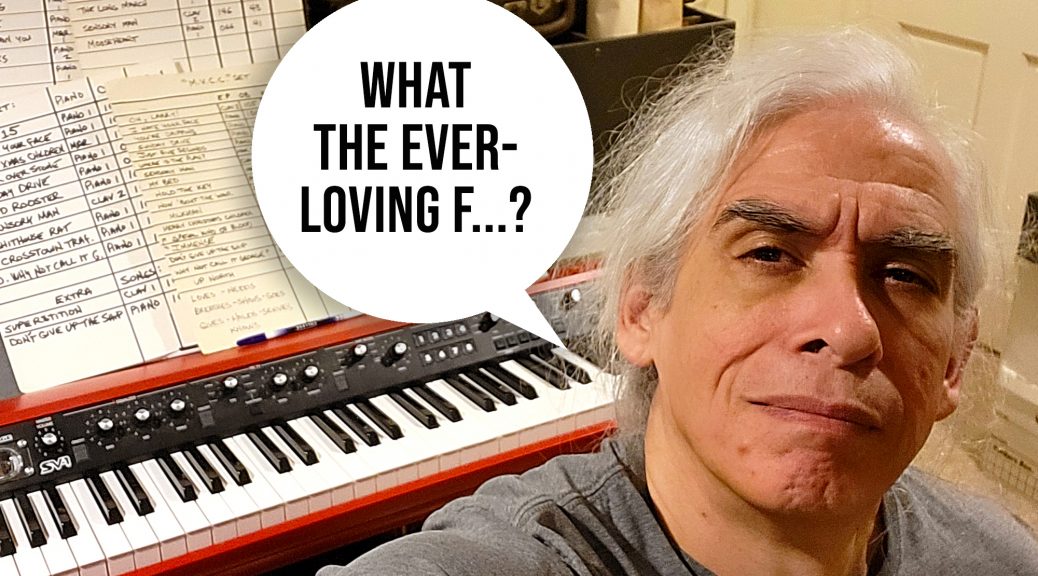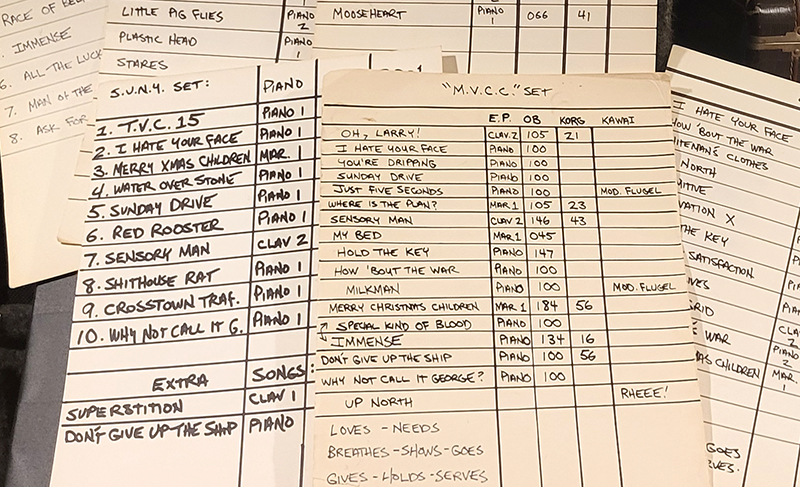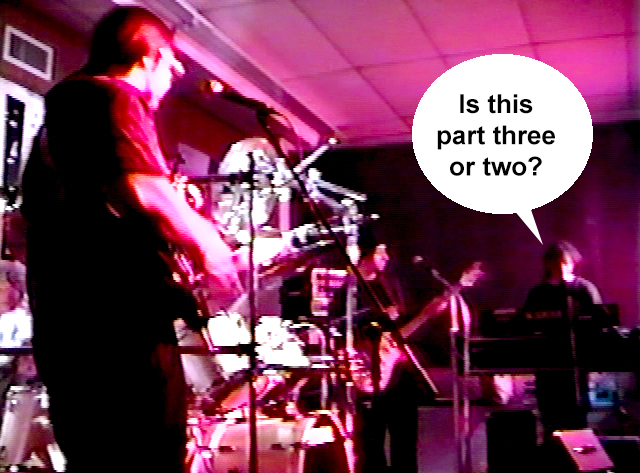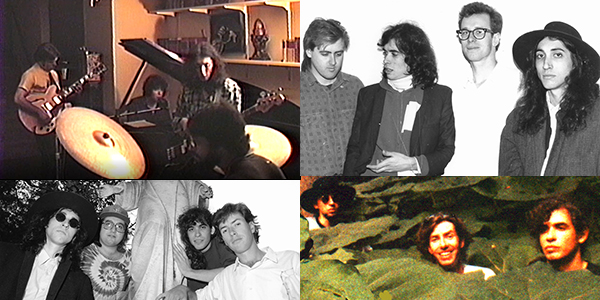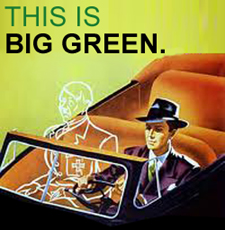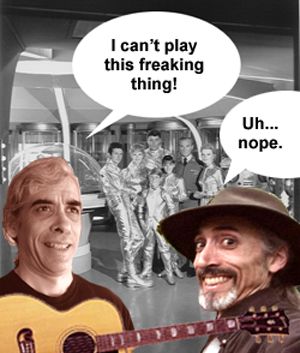Well, summer is almost over and I’m at the point of digging through old files again. I always get to doing that when the days start getting shorter. Last week I burrowed my way through some tax records from the 2000s. (Riveting stuff.) This week, it’s Big Green set lists. Those are perhaps marginally more interesting than old 1040s, but it largely depends on what you like.
For those of you not steeped in Big Green history, here’s the short version: we haven’t played a live gig in decades. Think Beatles post-1966 or XTC post-1982, except without the massive success, cult following, or obvious talent. Picture a handful of underfed guys in their twenties, humping their broken-down amps into some cheap dive. That’s us!
What the ancient tablets teach us
So what about those set lists? First glance, I can’t effing believe we played any of those songs. Of course, we’re talking about the late nineteen eighties, early nineteen-nineties – a time before ubiquitous cell phones, decades prior to the advent of “smart” phones with HD video cameras. The handful of times we put a show on tape, we had to get some freak to bring a VHS camcorder … which were not exactly thick in the ground, my friends.
Thing is, like most bands, we were working to fill out three, sometimes four sets. Fortunately for us, brother Matt has always been a songwriting machine, so we had plenty of material as long as we could convince a guitar player to learn a bunch of strange songs. We played clubs (most of which no longer exist) and colleges (Utica, SUNY PI, Middlebury, MVCC), as well as street fairs, outdoor concerts (usually with other groups), etc.
Strangely, I still have set lists from a couple of these college gigs. Looks like “I Hate Your Face” was always high on the roster. And that effing MVCC gig was an all-original set, no covers. What the ever-loving fuck.
Scoping out the song spectrum
You can tell from these yellowing sheets of poster board that we’ve been all over the map, musically speaking, since the late eighties. Our music runs the full spectrum from extremely silly to kind of serious. Here’s how I map it out in my own unscientific manner:
- 1987 – 1993 Songs: Silly to Extra Silly
- 2000 Years To Christmas (1999): Fairly Silly to Silly
- International House (2008): Mostly Serious (except for Volcano Man)
- Cowboy Scat: Songs in the Key of Rick (2013): Very, Very Silly
Now, with our upcoming album (still being mixed, by the way), we’re back to wearing the serious pants again. No big laugh riot on this sucker, folks … unless you’re laughing AT us. Then it’s funny as all hell.
Silly is just around the corner
For those of you who prefer the silly Big Green, fear not – we have an enormous trunk full of Ned Trek songs, all produced and waiting for remix. And trust me, there’s some silly-ass shit in that trunk. And that’s not to mention the older material we’ve recorded and never released.
So, good news / bad news: if you like the silly stuff, there’s more coming. If you hate it, well … lookout … there’s more coming.
TBT: That old used to be
You’ve probably heard them already, but here are a few selections from our stage set back in the goofball early nineties:

